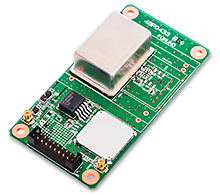Articles for ITS market Chinese “BAT” is accelerating their business in the EV (Electric Vehicle) market
The second EV bubble is coming in China
 The Auto China was held at the convention center close to airport.
The Auto China was held at the convention center close to airport.
 Dongfeng Motor Corporation, a large local company displayed at NEV.
Dongfeng Motor Corporation, a large local company displayed at NEV.
I covered the Auto China (April 29th to May 4th 2016) takes place once every two years in Bei Jing and found lots of EV (Electric Vehicles) were exhibited. This is because the world’s automotive industry is responding to the NEV (New Energy Vehicles) policy that the Chinese government has been promoting. Among them, I found the Chinese domestic manufacturers were very aggressively promoting their EV products.
Concerning the Chinese EV policy, I remember the “Ten city, 1000 project” carried out in late 2000s. It was the policy made by more than a thousand buses and taxies converted to EV in ten large cities. This caused “The first Chinese EV bubble”, especially the lithium ion secondary battery industry to become very hot. This policy was expanding to 25 cities, but in 2013 suddenly it was stopped by government. I asked a journalist who was familiar with Chinese affairs for the reason and he answered “The administration of this policy had many problems because the local governments lacked understanding of the policy”.
However, in autumn of 2014 the Chinese government suddenly announced a new EV policy to promote growth of NEV (New Energy Vehicles) for consumers. The government wants to expand sales promotion premiums and make preparations to legislate the NEV sales requirements for each car manufacturer. Therefore the Chinese government is cooperating with the American government to study a Zero Emission Vehicle (ZEV) Program. It consists of a research team composed of China Automotive Technology & Research Center (CATARC) and University of California, Davis (UCD). CATARC is located in Tianjin at the Chinese national Research Center. UCD is responsible for laboratory research related ZEV Programs for California Air Resource Board (CARB).
Early in 2016 car manufacturers have been very busy responding to a lot of NEV related notifications from the Chinese government. At the same time they have received Corporate Average Fuel Efficiency (CAFÉ) requirements with very strict terms that the Chinese government studied and adopted from the American government. One TOYOTA executive who is responsible for the Chinese market said “We are now in the process of trying to change the hybrid vehicle and plug-in hybrid vehicle product lines for the Chinese market drastically. The NEV and CAFÉ requirements from the Chinese government have been getting stronger”, but he would not commit to a time to market for EV and Fuel Cell (FCV) Vehicles.
On the other hand local Chinese car manufacturers plan on accelerating an earlier start for mass production of a broad product line including Sedan, Coupe and small SUV etc. to compete against Japanese companies. The Beijing show was like a “second EV bubble”.
Chinese “BAT” (Baidu, Alibaba and Tencent) IT companies are infiltrating the automotive industry
 A very mysterious company, LeSEE’s autonomous car.
A very mysterious company, LeSEE’s autonomous car.
 Changan Automobile’s autonomous car. Their driverless car successfully drove 2000km on the highway.
Changan Automobile’s autonomous car. Their driverless car successfully drove 2000km on the highway.
 Baidu’s car is being used to gather HD map data.
Baidu’s car is being used to gather HD map data.
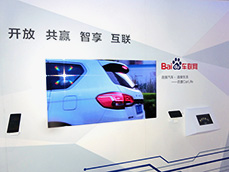 Biadu introduced their application “Car life” which has been adopted by many companies.
Biadu introduced their application “Car life” which has been adopted by many companies.
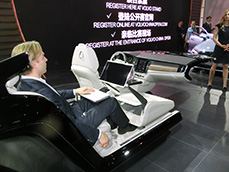 Volvo’s Chinese subsidiary, Chery Automobile displaying images of their autonomous car.
Volvo’s Chinese subsidiary, Chery Automobile displaying images of their autonomous car.
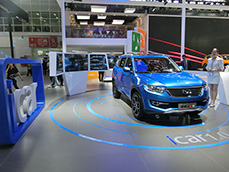 One local Chinese company displaying their “iCar” concept. They stressed “IoV”, not “IoT”.
One local Chinese company displaying their “iCar” concept. They stressed “IoV”, not “IoT”.
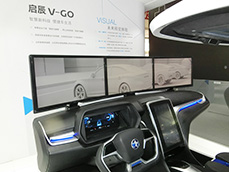 Dongfeng & Nissan’s entry level car “Venucia”. They stressed the importance of IoT.
Dongfeng & Nissan’s entry level car “Venucia”. They stressed the importance of IoT.
In Auto China, I found there were many booths of autonomous cars trying to synchronize their activities with Japan and western countries. Among them included a start-up company called “LeSEE” located at HongKong which attracted my attention. LeSEE said it is an affiliated company of LeTV which provides TV and internet service and will technically partner with Faraday Future. It is rumored Apple is behind this company but no one knows for sure.
In contrast one local Chinese car manufacturer has been continuing with a very orthodox development for autonomous cars. It is Changan Automobile Co., Ltd. They played a video at Auto China which demonstrated their autonomous car testing. The driverless car drove 2000km to the convention center on the highway. Changan Automobile is cooperating with Baidu, the largest map data service provider in China to create high precision maps required for autonomous cars. They also exhibited a LIDAR/radar laser and camera with video deployed in a small SUV.
Baidu is strongly spreading their influence in the in-vehicle infotainment (information and entertainment) market. They started providing “Car Life”, which is a smartphone application for in-vehicle devices for all car manufacturers. In China, Google has been removed from business markets by Chinese government. This is why Google’s application “Android Auto” is unavailable in China even it is very popular in the US and Europe. The standard applications for automotive market in China are “Car Life” and Apple’s “Car Play”.
At the same time, one large Chinese IT company is also spreading their influence in the automotive market. It is Alibaba, the largest company for online shopping. “T Mall”, the online shopping site provided by Alibaba is providing a special service which is “buying a car online”. They introduce car dealers to customers who want to buy a new car. A HONDA executive who is responsible for the Chinese market, said “30% of customers who buy our car in China are from T Mall. This number can reach 60% in inland China where there are not many car dealers. Furthermore Alibaba is also providing an online payments service called “Alipay” which is also widely accepted in ridesharing market.
“We chat” provided by Tencent is the largest social networking service provider in China. It has also been adopted by many car manufacturers as an in-vehicle application with domestic specifications.
“BAT” includes these three companies, Baidu, Alibaba and Tencent which makes BAT the largest IT companies in China.
It is very certain that BAT will be increasing their presence in the automotive market. Their core consumers in this market are people born in the 1980’s with the car manufacturers and IT companies trying to also strengthened their appeal to “a new value of car” for people born in 1990s.
Writer introduction

Mr. Kenji Momota Automotive journalist
His major is the world automotive industry and he is also familiar with the energy industry, IT and the aging society problem as the related fields. He acts around the world based in Japan and USA and writes for the general magazines, the technology journals and the automotive related media etc.
He is also commentator of motor race and world's motor show on TV program based on his career of the driver of Indy Racing League and NASCAR. In recent years, he has been covering about a paradigm shift from developed countries to developing countries, the motorized vehicle like EV and the telematics.
FURUNO ITS Journal
Click here for the latest articles after 2022 (in Japanese)2022
- The "realistic" self-driving roadmap shown by the Japanese government and a hands-on report on the latest Subaru EyeSight X
- Will FCVs (Fuel Cell Vehicles) Become Popular? ~New Movement in Toyota and Honda~
- The 'Complete' online sales of new cars start in Japan. Will this new way of buying cars take root?
- Many Firsts! On-Site Report from Tokyo Auto Salon 2022 - The author, who knows what goes on behind the scenes, looks back on 40 years of history. -
2021
- "Moving toward zero traffic fatalities for four-wheeled and two-wheeled vehicles globally in 2050" ~Experience on Honda's latest safety technologies~
- Tsuneishi Shipbuilding's building and DX, an exclusive visit to the main factory
- Japan's Smart City: New Moves toward Practical Use
- When will self-driving buses (service cars) be put to "full-scale" practical use?
- Utilization vehicle data during disasters
- Toyota-led Connected Technology to Transform Commercial Vehicle Business -From light trucks to large trucks and buses-
- Toyota enters the connected car "Personalization" business
- Japanese automakers' carbon-neutral strategies swept up in ESG investment
- Drive experience of the latest autonomous vehicle models and advanced driving support systems
- Will carbon neutrality accelerate the trend to strengthen LCA (Life Cycle Assessment)?
- Semiconductor shortage exposes realities of the automotive industry
- Online Autonomous Driving Contest Enhancing development of Human Resources
2020
- What happens to CASE when gas cars are banned in Japan?
- When will Flying Cars be launched?
- Expectation vs. reality:Autonomous Driving in Japan
- V2X, Becoming increasingly important in autonomous driving
- Technology of Subaru “EyeSight X”
- Lifestyle-oriented French cars gain popularity in Japan
- Human-oriented smart cities are wanted
- MaaS and CASE, how would automotive industry change after COVID-19?
- The beginning of virtualization era, triggered by COVID-19
- Trend of EV shift and consumer demands
- TOYOTA Press conference about ADAS - Releasing algorithm for "sudden acceleration suppression during attempted sudden acceleration" free of charge -
- The Japanese automotive industry in 2020 - 3 turning points -
- "Using a smartphone while driving" and "Level 3 automated driving"
2019
- Motor show business model is at a turning point - Tokyo Motor Show Report -
- Commercialization and monetization of MaaS - ITS World Congress Singapore Report -
- Android Automotive pays attention to V2X - Report from the Frankfurt Motor Show 2019 in Germany -
- Automobile Distribution Revolution and DCM (Data Communication Module)
- Connected business potential and newly proposed "eMaaS" by Honda
- 5G services for practical use are multiplying
- Connectivity technologies attracting attention due to frequent traffic accidents
- Shanghai Motor Show report -SUV, EV, Automated car & 5G-
- Drone Business roadmap and updates to Michibiki (Quasi-Zenith Satellite System)
- MaaS (Mobility as a Service) "town development." Full-scale promotion for a national project
- CES organizer states "Data Period in 2020s." Transformation of the Automotive Industry in CES, US "-CES2019 Report-"
- "Return to Origin" directed towards the age of change, automatic operation and connectivity
2018
- New proposal for Private Car Automated Driving Level and other Hot 5G Technology Topics
- Standardized EV charging infrastructure concerns in Europe, US, Japan and China - Kobe EVS 31 field report -
- Touring a pure car carrier and a test drive of the latest hybrid car
- Planning stage products are exhibited at the newly established visualized mobility service "TOYOTA MOBILITY SHOWROOM".
- Potential “Community Car-share” program promoted by local residents
- CES Asia Report 2108
- Companies attempt new Vehicle-to-Infrastructure communications, including traffic volume measurements and vehicle positioning. -ITS Asia Pacific Forum in Fukuoka-
- Geneva show in Switzerland. Flying cars and MaaS (Mobility as a Service) were hot topics.
- EV (Electric Vehicle) proposals by country
- MaaS competition through service mobilization, M & A and technical field collaboration is accelerating. - The CES 2018 Report -
2017
- Big data’s initiative and fight for the automotive industry. Cooperation among companies becomes increasingly important.
- Connected car and road-to-vehicle communication automatic operation
- ETC (Electronic Toll Collection) and ETC2.0. Current situation and projected future
- Rapid development of sharing economy
- Germany is first to recognize level 3 automated driving
- ITS EU 2017 Field Reports -Automatic Operation and the eCall-
- From Infotainment to ITS, the competitive area is spreading in the car big data industry.
- GTC (GPU Technology Conference) Report and the de facto standardization of AI (artificial intelligence)
- Renesas' new challenge! "e-AI Solution" and "Renesas Autonomy"
- The Automobile industry is shifting from a manufacturing industry to a service industry.
- The movement toward accident countermeasures for aging drivers in Japan
- Fusion of ride sharing and fully automated driving is advancing in the USA.
2016
- Overview of the Quasi-Zenith Satellite System (QZSS) and advancements toward full-scale practical use including the Tokyo Olympic Games - G-space EXPO 2016 report-
- Japan’s automated driving project "SIP-adus" will be a large demonstration experiment.
- The International Home Care & Rehabilitation Exhibition. There were many car manufactures with exhibits booths at this show.
- Japanese car manufacturers starting to concentrate on strengthening the ADAS system
- A new movement of legislation for autonomous cars
- Cyber Security and “AGL”, the new OS for automotive are hot topics in the connected car industry
- “High precision 3D map” the key future of autonomous car and pedestrian dead reckoning
- Chinese “BAT” is accelerating their business in the EV (Electric Vehicle) market
- Tesla's original connection to Taiwan and the new transportation system technologies.
- "The main topic" of the Geneva Motor Show was how to strengthen "pedestrian protection"
- The probe data business is getting more competitive
- Reporting directly from the 2016 CES show "Data services will soon become the main revenue source of automotive industry"
2015
- Do the automated driving systems need the GNSS (Global Navigation Satellite System) ?
- ETC Version 2.0 is coming soon. A new service was announced at the Tokyo Motor Show and the possibility that is could be used as a device for older drivers.
- "Connected Horizon" and "eHorizon". Germany's leading parts supplier accelerates strengthening of "Big Data" for business



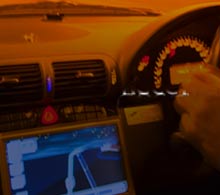 GPS/GNSS Receiver&Chips and Modules (positioning and timing)
GPS/GNSS Receiver&Chips and Modules (positioning and timing)